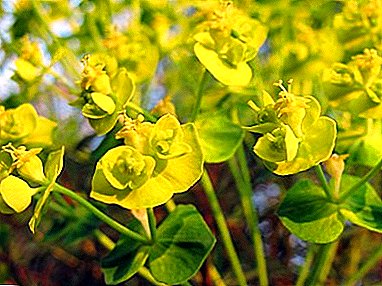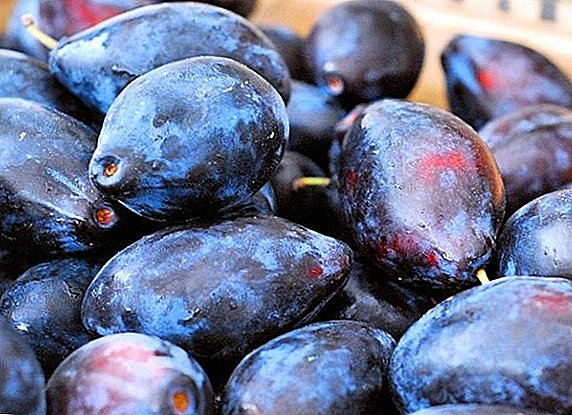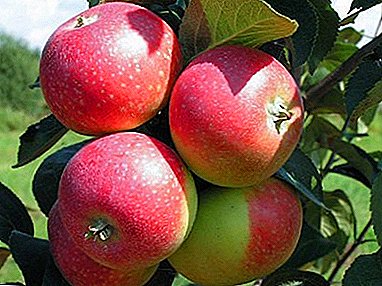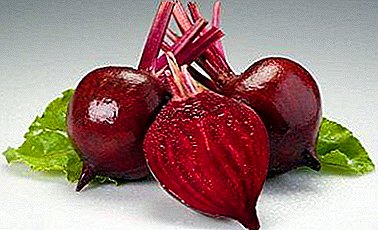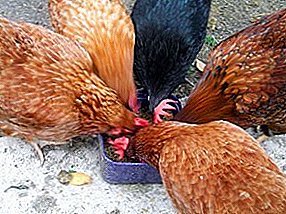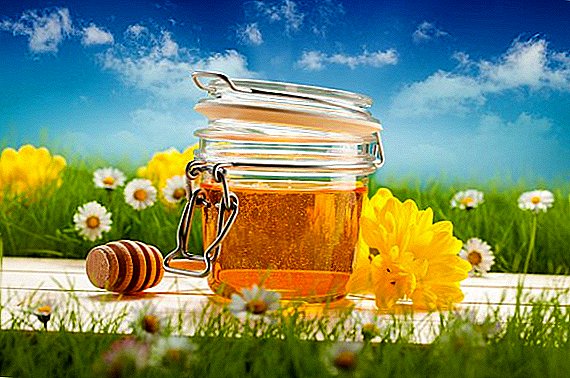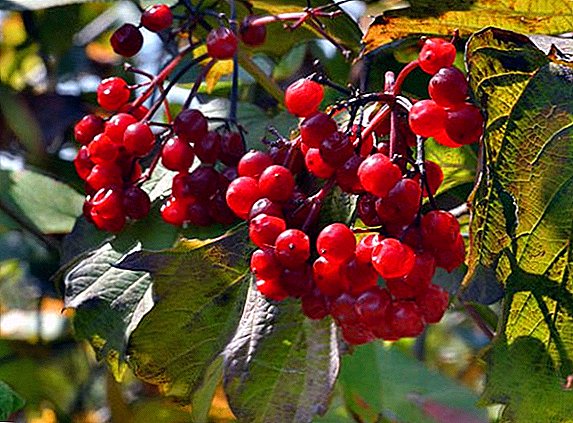 Iris is a sophisticated, elegant and amazingly beautiful flower. Translated from the Greek language "iris" means "rainbow" - this is how in ancient times this flower was named for its wide variety (numbering from 700 to 800 plant species), original forms and richness of color.
Iris is a sophisticated, elegant and amazingly beautiful flower. Translated from the Greek language "iris" means "rainbow" - this is how in ancient times this flower was named for its wide variety (numbering from 700 to 800 plant species), original forms and richness of color.
Description
Iris is a rhizomatous perennial plant. The root system of the flower is located at a shallow depth, and in bearded irises it generally comes out. The height of the stem can be perfect different: 15 cm - the stem of the dwarf iris, 200 cm - the stem of the marsh iris.
Did you know? Until the second half of the XIX century in Russia, the irises had a completely different name - "iris". And in Ukraine they are still called "cockerels".
The number of branches of the peduncle depends on the type of plant and variety. The flowers themselves are distinguished by their unique delicacy and tenderness. The flower consists of 6 petals: 3 inner petals stretch upward to form a dome, and 3 outer petals are bent downward.  Iris petals are located so that you can examine each of them in detail. A distinctive feature of the bearded varieties of this plant is the presence of soft, bristly outgrowths on the outer bent petals, which in appearance resemble a beard - hence this group of flowers took its name.
Iris petals are located so that you can examine each of them in detail. A distinctive feature of the bearded varieties of this plant is the presence of soft, bristly outgrowths on the outer bent petals, which in appearance resemble a beard - hence this group of flowers took its name.
Popular varieties
Varieties of bearded irises are usually divided into groups that take into account the height of the peduncle.
There are such groups of garden irises:






The most common varieties of bearded iris are presented with photos and descriptions. Small dwarf irises very low, their length does not exceed the mark of 37 cm. They are used for landscaping the territory, as they are not demanding to care and grow very quickly:
- "Amsterdam" - have flowers of a yellow-golden color with brown splashes. Begin to bloom in April and end in May. The grade "Amsterdam" favorably looks in a stony garden or landed along borders.
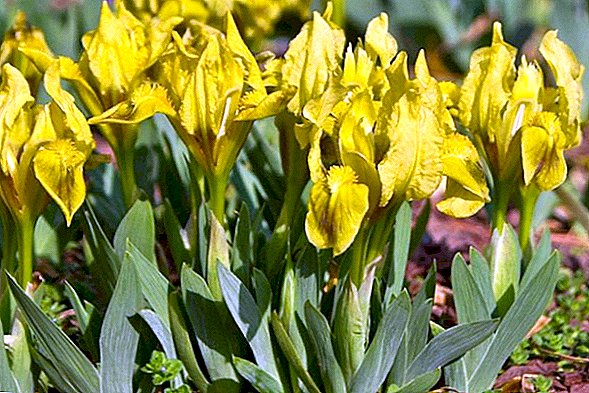
- "Nain Lives" - the inner petals have a milky yellow color, and the outer ones are painted in a saturated red color with a burgundy palette mixture and have a clear and wide white border. At the base of the outer petals are golden spots and there is a kind of pattern of white rays. They have a very pleasant aroma.
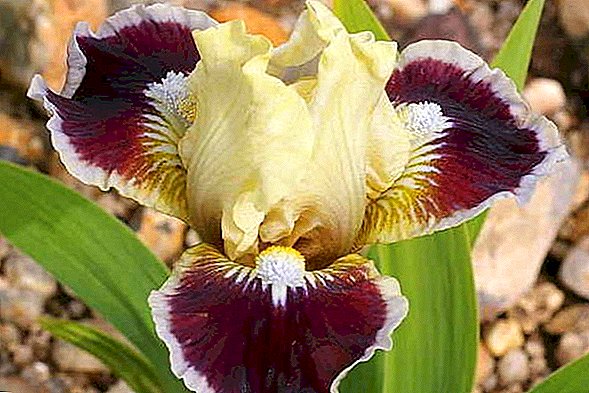
Medium tall irises reach a length of 70 cm. They are planted along the borders, they also look favorably on inclined surface areas:
- "Batik" - have flowers of purple color with a combination of numerous white veins. The size of the flower in diameter reaches 15 cm. They have a sweet-spicy aroma. The variety is resistant to various weather conditions, diseases and pests.
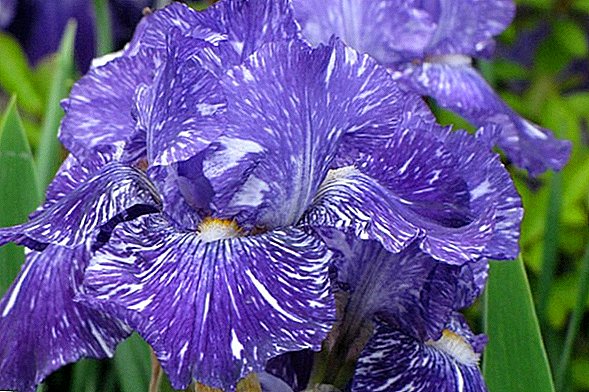
- "Arctic Age" - snow-white flower with corrugated petals. Perfect for creating a monochrome garden.
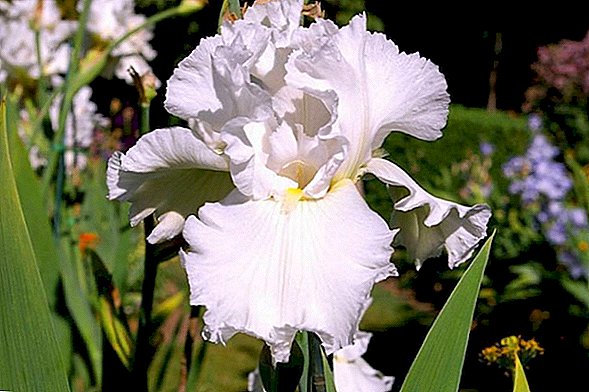
- "Oregon Skye" - a flower with azure-blue color, wavy petals and vanilla scent.
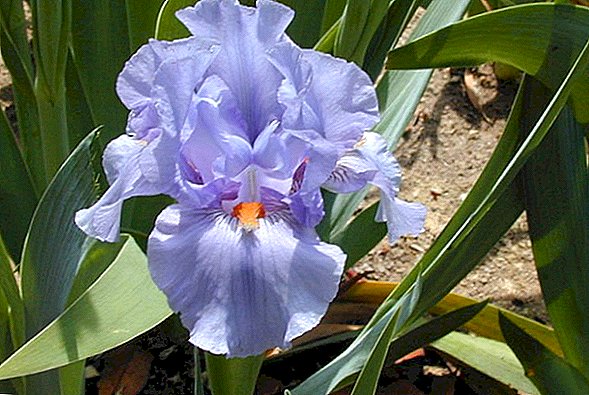
High varieties of bearded irises are considered to be plants, the stem length of which varies between 80-120 cm:
- "Burgomaster" - the flower is of medium size, orange-violet colors prevail at the edges of the outer petal, and the center has a dark saturated purple hue. The internal lobes have a yellowish color with a whitish-pink tinge, along the petal are streaks of lilac color. The length of an adult plant is 80 cm. This variety feels good on the southern and south-western slopes.

- "Beverly Hills" - a very popular perennial variety. The flower is of medium size, bright coral-pink color, has a lace, as if corrugated beard with a reddish color. Peduncle grows in length to 1 m, the leaves are narrow, have a rich green color. The plant feels good in sunny, windless areas, as an example - the southern slope.

- "Arkady Raikin" - a flower of a pinkish-red color with an orange edging, looks spectacular and has a strong spicy aroma. Flowering period - medium.

- "Guards" - The plant has a large bright yellow inflorescence up to 15 cm in diameter. It has a pronounced aroma.
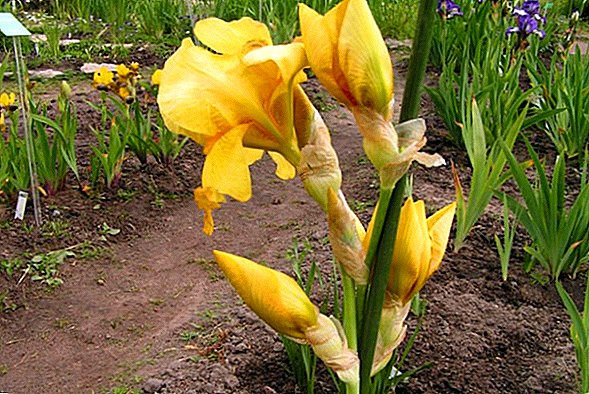
Place to grow
By choosing a place for planting irises must be approached responsibly. Bearded iris needs moisture-permeable or stony soil with neutral acidity. The flower grows very well on an inclined plane and loves the sun, because the number of buds of flower buds for the coming year depends on it.
Location and lighting
For the cultivation of irises you need to find a sunny place, not blown by winds and drafts. Most flowers can tolerate light penumbra from the trees, but they should not be planted in the shade of the trees, since in this case one can not wait for the release of peduncles. 
Soil type
For planting, it is necessary to choose a site with nutrient loamy soil having neutral or slightly acidic soil acidity. The site should be with good drainage, as the irises can not stand the excess moisture.
Preparing the soil, take care to make it rotted organic fertilizer. To facilitate the soil to humus it would be good to add sand and wood ash.
The rules of planting bearded irises
To obtain a quality flower of bearded iris, which will delight with its beauty, timely planting and proper care of the plant in the open field are necessary.
The best time for planting and transplanting a flower is considered to be the time after flowering, then the plant will form new roots. If you look closely at the rhizome, then below the base of the leaves you can see the tubercles of light green color - these are the rudiments of the roots.
When they grow up, they will be very fragile and brittle. Therefore, irises are planted either immediately after flowering, or in the fall, when the roots become fibrous and hard.
Did you know? From the rhizomes of the iris flower, people have learned how to make iris oil, which is used in the production of perfumery products of very high quality.Asking how to plant a bearded iris, many gardeners adhere to the same answer. When planting iris, it is necessary to make a light depression with a small mound.
Place a flower on this mound, spread the roots well, and, compacting, cover them with earth. Delenki plants should not be greatly deepened, as the root should be well heated by the sun.
The prepared material of bearded iris, when planted in the ground in spring, must be treated with growth stimulants. If the rhizome is very long, it is necessary to cut it a little, remove the rotted places and keep in a weak solution of potassium permanganate for about 20 minutes.
How to care for flowers
In order for the iris to please its flowering for a long time, it is necessary to produce a number of works.
Soil care
Bearded iris in spring requires special care. It does not imply hard labor, you just need to be extremely careful when loosening the soil. The roots of the flower are close to the surface of the earth, and care must be taken not to damage them.
Important! Irises can not bloom on acidic soil! In this case, the plant will have a lot of strong leaves, but it will not throw out the buds. Dilute the soil is possible by adding ash, lime or dolomite flour.

Watering
The accumulation of water and nutrients in irises occurs in the root system. Therefore, they need watering only during dry summer and during the flowering period in order to prolong it.
Pruning leaves and withered shoots
In August, the leaves begin to slowly die off, this may serve as a signal that it is necessary to make sanitary pruning of the plant. To do this, completely remove all dried leaves, shorten the rest by half or one third.
In such a simple way, you can save the plant from all sorts of diseases, whose carriers are old leaves and flowering peduncles.
Separately about feeding
In the spring
The plant needs feeding in the spring. You can make potash fertilizer in the form of a solution under the root of the iris. This top dressing will help the development of leaves and increase the size of the flowers.
Important! It is forbidden to feed the plant during flowering.

Summer
In the summer, when the flower stalks have bloomed, you can feed the plant with phosphate fertilizers - they will stimulate the growth and formation of inflorescences next year.
In the autumn
In the autumn season, the flower needs an accumulation of soluble carbohydrates, and their source is phosphate and potash fertilizers.
Preparing flowers for the winter
If severe winters are common in your area, then a bearded iris needs to be properly prepared for winter. For this rhizome you need to cover a pillow of fallen leaves, coniferous branches or sawdust.
Possible diseases and pests
Prevention is the main enemy of all kinds of diseases and pests. With timely cleaning of the site and removal of weeds, the plant is less susceptible to various diseases. The most common diseases in iris are:


To remove pathogenic bacteria will help a weak solution of potassium permanganate. If you put the plant root for 30 minutes in this solution, the bacteria will die. Roots spread in the sun and dried for 8 hours, turning the rhizomes.
At defeat of a sheet plate it is necessary to spray a flower 2 or 3 times Bordeaux mixture.











